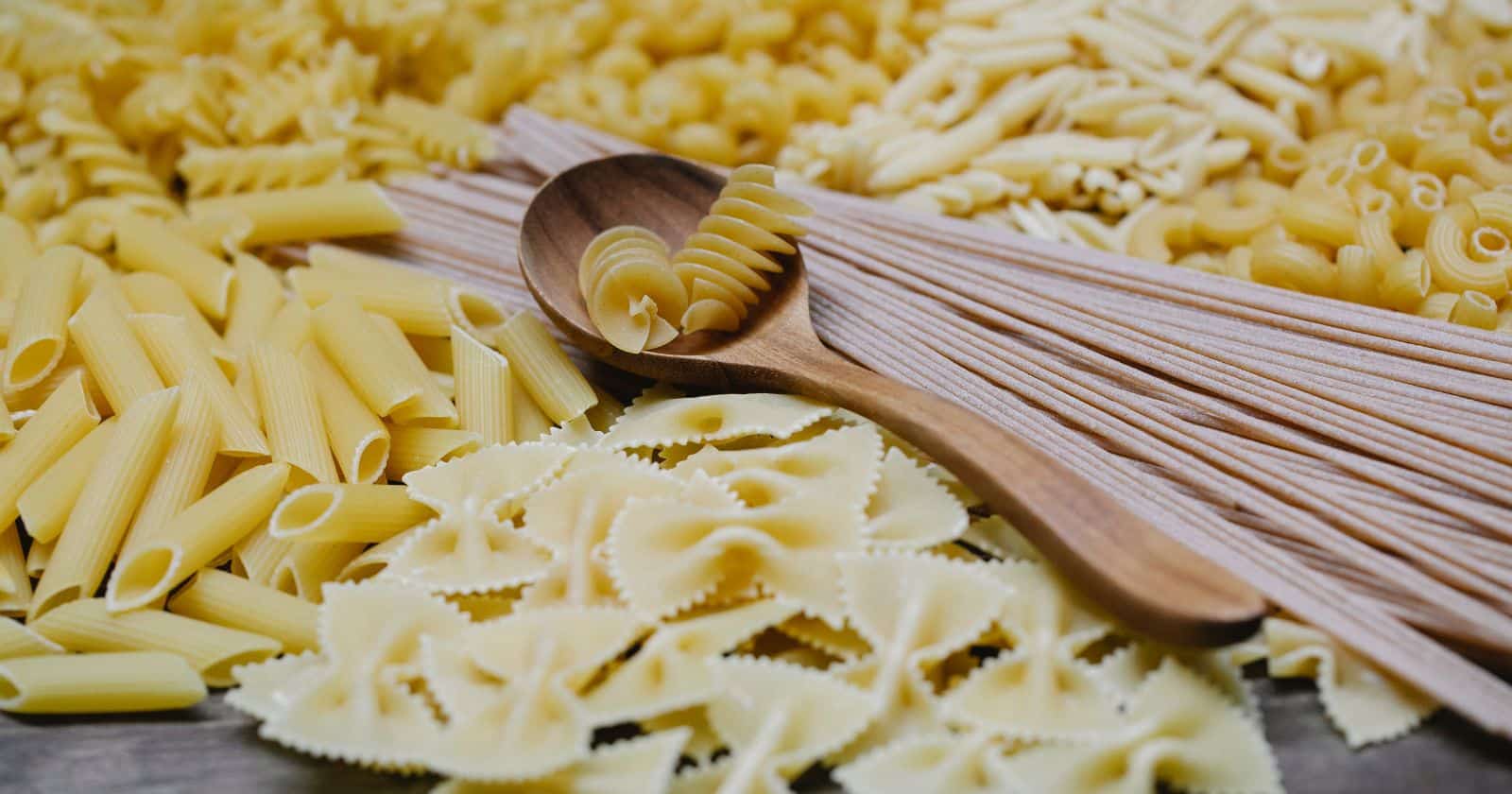If you’ve ever wondered what those white spots on your dry pasta are, the most common explanation is the presence of mold spores. However, it’s important to note that dry pasta itself does not mold easily.
These spots on fresh or cooked pasta could be signs of mold growth due to improper storage or exposure to irregular light. They could also be a result of physical damage or color loss that occurs with time. To avoid any potential health risks, it is recommended to discard pasta with white spots.
What Are White Spots on Dry Pasta?
What are white spots on dry pasta? White spots on dry pasta are a common occurrence and can be caused by various factors. Here are some possible explanations:
- Incompletely hydrated flour: Cheap brands of dry pasta may have white spots due to incompletely hydrated flour. These spots are essentially dry flour that did not fully absorb moisture during the pasta-making process.
- Physical damage: If the pasta has been physically damaged, such as during handling or packaging, it may develop white spots. These spots are often the result of the exposed inner flour becoming visible.
- Color loss: White spots on dry pasta can also be a result of color loss. When pasta is exposed to irregular light or starts to go stale, it may gradually lose its original color, resulting in white spots.
- Mold spores: Another possible cause of white spots on dry pasta is the presence of mold spores. If the storage area was not properly sealed or if the pasta became damp, mold may develop and appear as white spots.
Understanding Mold Growth on Dry Pasta
Dry pasta is not likely to grow mold or become unsafe to eat unless it has been stored in humid conditions. This is because mold needs moisture to grow, so it would be odd to find it in an unopened box of dry pasta. However, if dry pasta has been exposed to moisture, either because of a water leak or extremely high and consistent humidity, it is possible for the packaging to become damp enough to allow for bacterial growth.
If you notice black spots on your dry pasta, it could be a sign of mold growth. However, it is worth mentioning that mold can only grow on your dry pasta if it is kept in an unopened jar or container in a humid and warm environment. It is important to store dry pasta in a cool, dry place, away from direct sunlight and heat sources, to prevent moisture buildup.
To ensure the safety of your dry pasta, it is best to err on the side of caution. If you are unsure whether the pasta is safe to eat, it is recommended to throw it out. By properly storing dry pasta and being aware of its exposure to moisture, you can prevent mold growth and enjoy your pasta without any concerns.
Health Risks Associated with Mold Spores
Exposure to mold spores can have various health risks, especially for individuals with allergies, existing respiratory problems, or weakened immune systems. Here are some potential health problems associated with mold spores:
- Allergic reactions: Mold or mold spores can cause allergic reactions in sensitive individuals, leading to symptoms like sneezing, runny nose, red eyes, and skin rashes.
- Asthma attacks: People with asthma who are allergic to mold can experience asthma attacks triggered by mold exposure.
- Irritation: Both mold-allergic and non-allergic people can experience irritation of the eyes, skin, nose, throat, and lungs due to mold exposure.
It is important to note that the severity of health risks depends on factors such as the type of mold, the duration and amount of exposure, and individual characteristics.
Some molds, such as Stachybotrys and Aspergillus, can produce toxins called mycotoxins under certain conditions, which can lead to more serious illnesses. Additionally, individuals with weakened immune systems may be at risk of fungal infections if exposed to black mold.
Proper Storage Guidelines to Prevent Spoilage
Proper storage guidelines are crucial to prevent spoilage and ensure the safety of our food. By following these guidelines, we can maintain the freshness and quality of our dry pasta, as well as other food items. Here are some tips to help you store dry pasta properly:
- Store in a cool, dry place: Dry pasta, such as spaghetti or macaroni, should be stored in a cool and dry location. A pantry or cupboard away from direct heat and sunlight is an ideal choice. This helps to prevent moisture from affecting the pasta, which can lead to spoilage and the development of white spots.
- Use sealed containers or storage bags: To maintain the taste and freshness of dry pasta, it’s important to store it in sealed containers or storage bags. This prevents the pasta from being exposed to air and moisture, which can cause it to become stale or develop mold.
- Check for any signs of spoilage: Before using dry pasta, always check for any signs of spoilage. Look for the presence of white spots, which could indicate the growth of mold. If you notice any discoloration, an off smell, or strange texture, it’s best to discard the pasta to avoid any potential foodborne illnesses.
Maintaining Quality and Flavor of Dry Pasta
Maintaining quality and flavor of dry pasta is crucial to ensure a satisfying meal. To achieve this, it is important to follow proper storage techniques and cooking methods. Here are some tips:
Proper Storage:
- Store dry pasta in a cool, dry place away from direct sunlight and heat sources. Excessive heat can cause the pasta to deteriorate and lose its quality.
- Keep dry pasta in its original packaging until you are ready to use it. The packaging is designed to protect the pasta from moisture and air exposure, which can lead to spoilage or staleness.
- Check the expiration date on the package and use the pasta within two years of the “best by” date. Over time, the pasta can lose its texture and flavor, so it’s essential to consume it before it gets too old.
Cooking Techniques:
- Cook dry pasta in a large pot of salted boiling water, stirring occasionally, until it reaches the desired al dente texture. This refers to pasta that is still slightly firm when bitten. Overcooking can result in a mushy texture and negatively impact the pasta’s flavor and quality.
- Add salt to the pasta water before boiling to enhance the overall taste of the pasta. Salt helps to bring out the natural flavors and adds depth to the dish.
- Use high-quality pasta for the best flavor and texture. Cheaper brands of dry pasta may lack the same level of quality, leading to a subpar eating experience.
Enhancing Flavor:
- Experiment with flavorful sauces and toppings to enhance the taste of your pasta. From classic tomato-based sauces to creamy cheese or pesto options, there are endless possibilities to elevate the flavor profile of your dish.
- Consider adding fresh herbs, spices, or garlic to your pasta to impart additional flavors. These ingredients can complement and enhance the taste of the pasta, making it even more enjoyable.
Identifying Spoilage in Fresh or Cooked Pasta
Fresh or cooked pasta can spoil if not stored properly or if it is past its expiration date. Here are some ways to identify spoilage in fresh or cooked pasta:
Fresh pasta:
- Fresh pasta should be consumed within two days if kept in the fridge, and two months if kept in the freezer.
- Check for a sour smell, slimy texture, or visible mold growth.
- If any of these signs are present, the fresh pasta should be discarded.
Cooked pasta:
- Leftover cooked pasta can be kept in the fridge for up to five days, and frozen for up to two months.
- Look for a sour smell, slimy texture, or visible mold growth.
- If any of these signs are present, the cooked pasta should be discarded.
Dry pasta:
- Dry pasta has a long shelf life if stored properly, but it can lose its flavor over time.
- It is technically safe to eat dried pasta past its expiration date, but not recommended.
- Inspect for a sour smell, slimy texture, or visible mold growth.
- If any of these signs are present, the dry pasta should be discarded.
It is important to prioritize food safety and err on the side of caution when it comes to consuming pasta that shows signs of spoilage. If unsure, it is best to discard it to avoid any potential risks.





